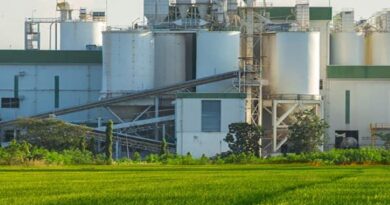Japanese Researchers Discover More Sustainable Way for Producing Green H2

As per a study published in Nature Catalysis, researchers at the RIKEN Center for Sustainable Resource Science, Japan, have found a more sustainable and efficient method for producing green hydrogen from water. The team of researchers has employed cobalt and manganese in electrolysis, instead of rare earth materials to produce green hydrogen which is required in fuel cells and agricultural fertilizers industries.
The study informs that hydrogen is a key component in the manufacturing of ammonia which is a key raw material in almost all synthetic fertilizers. Currently, ammonia production units use fossil fuels to produce hydrogen because ‘green hydrogen’ produced from the process of electrolysis is costly and not sustainable for companies.
Ryuhei Nakamura, who led the research, says, “This is primarily due to a scarcity of good catalysts. The catalyst must be very active in addition to being able to withstand the harsh acidic environment. If this is not done, the amount of electricity required for the reaction to produce a given amount of hydrogen skyrockets, and so does the cost.”
According to the study, rare earth materials like platinum and iridium are the most active catalysts for water electrolysis but they are highly expensive because of their scarce presence in nature. On the other hand, the research says that iron and nickel are abundantly found on Earth but are insufficiently active and get dissolved in the acidic electrolysis scenario.
The team investigated oxides of cobalt and manganese to find an optimal catalyst. Cobalt oxides were found to be active but they corroded fast in an acidic environment. Manganese oxides were found to be stable but not active.
The team tried to combine them and use their beneficial properties to find a suitable catalyst for electrolysis. High current density was also necessary to employ the catalyst in industrial production of green hydrogen.
Co-author Shuang Kong informs, “We needed to set our study’s target current density to about 10 to 100 times higher than what had been used in previous experiments for industrial-scale hydrogen production. The high currents caused a number of issues, including physical decomposition of the catalyst.”
Through continuous effort, the researchers discovered an active and stable catalyst called cobalt manganese oxide Co2MnO4 that performed well in the tests. The team found that the activation levels correspond to iridium oxides. The cobalt manganese catalyst also lasted for more than two months as against the rare earth metal catalysts which would last some days or weeks at most. The research team says that the new catalyst can be a game changer in the hydrogen industry.
Ailong Li, co-author says, “We have accomplished what scientists have sought for decades. Production of hydrogen using a highly active and stable catalyst made of abundant metals. In the long run, we believe this is a significant step toward establishing a sustainable hydrogen economy.”




